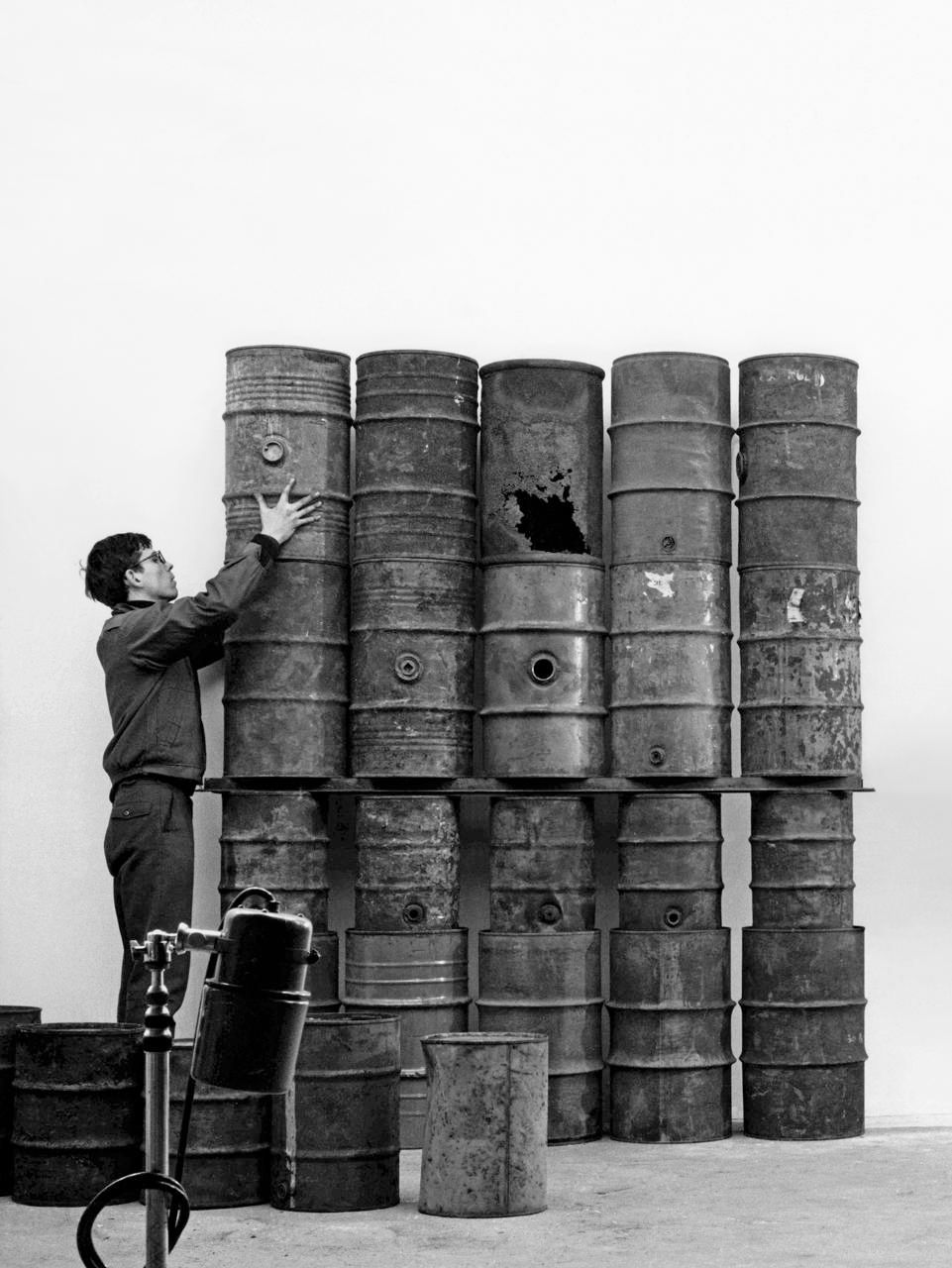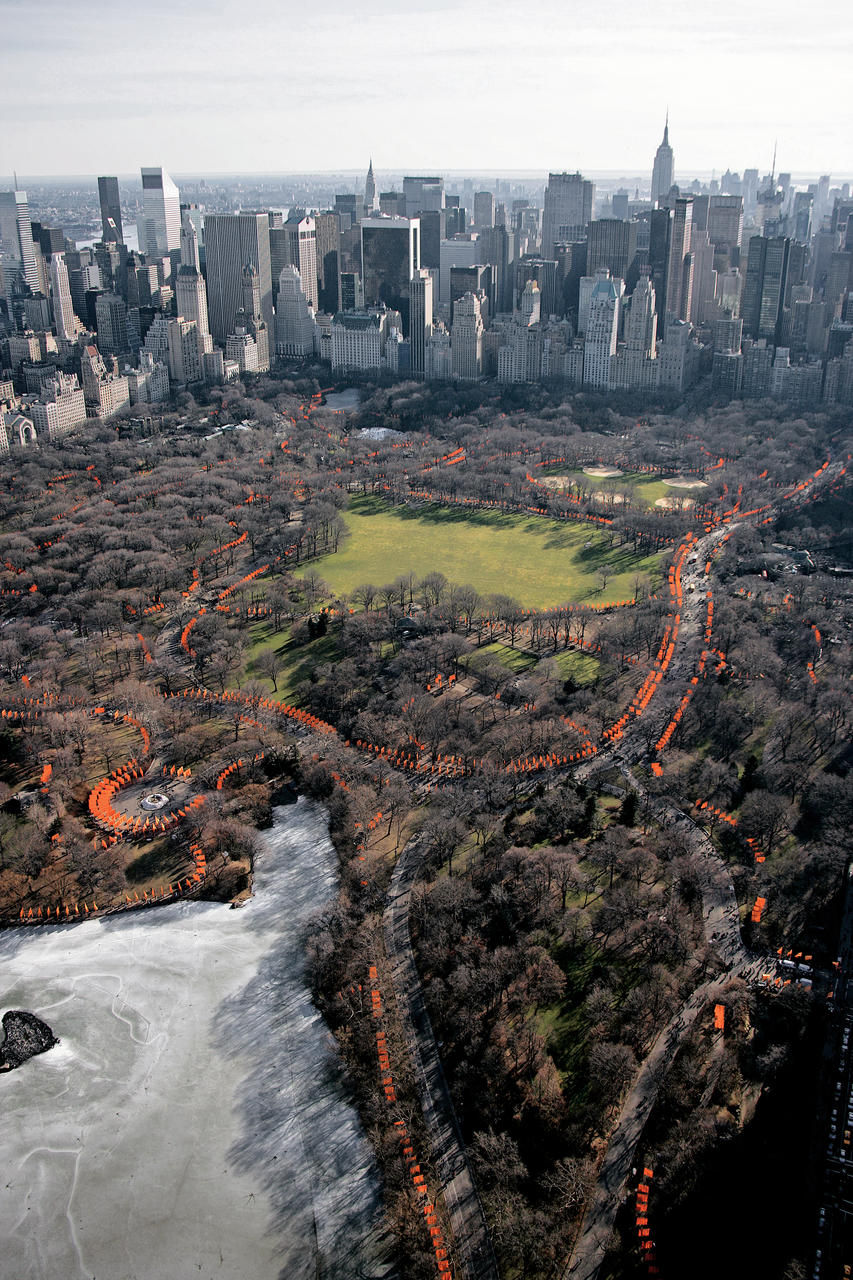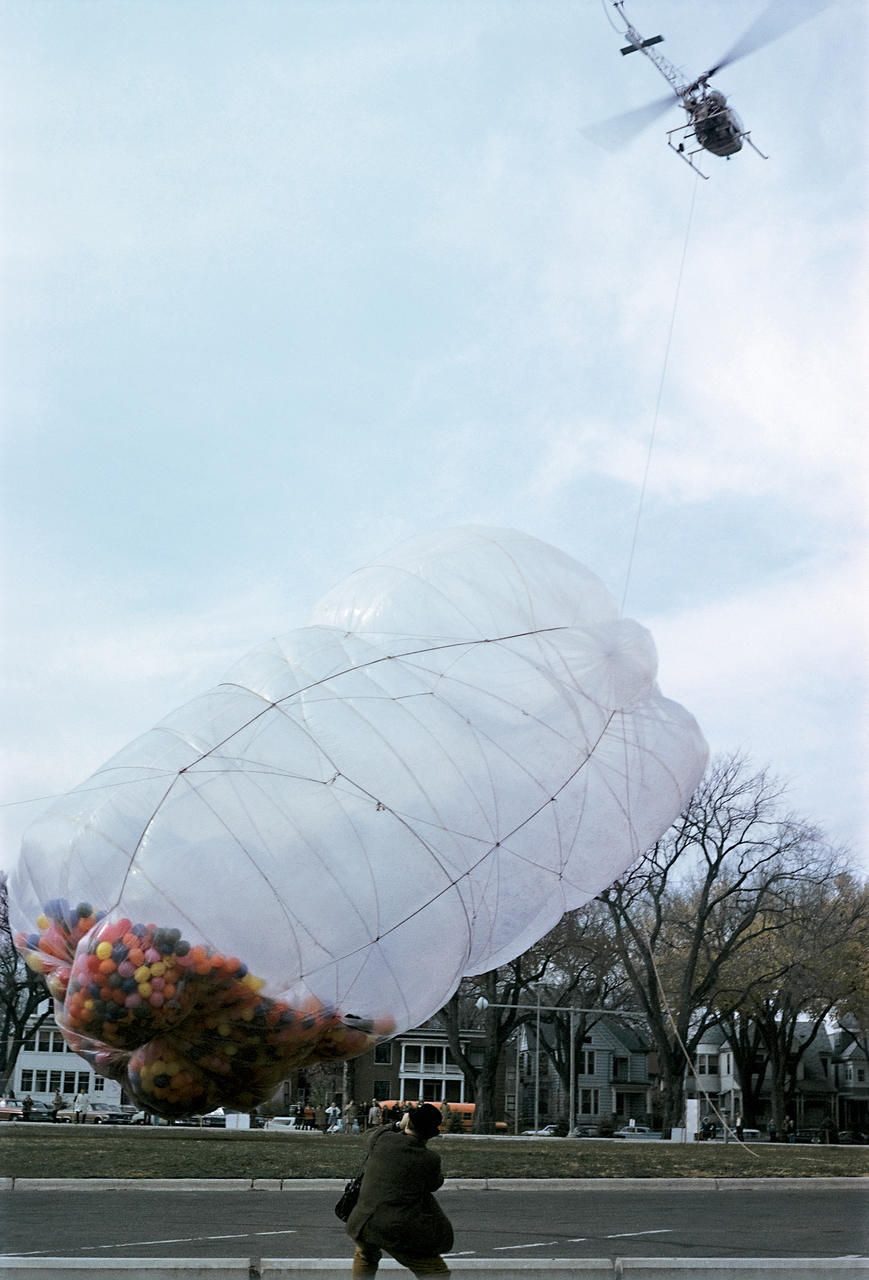Gigantic Works from the Late Couple Christo and Jeanne-Claude.
- Manuel Puig

- May 15, 2020
- 4 min read
Christo Vladimirov Javacheff (1935–2020) and Jeanne-Claude Denat de Guillebon (1935–2009), known as Christo and Jeanne-Claude, were artists noted for their large-scale, site-specific environmental installations, which often included large landmarks and landscape elements wrapped in fabric.

Their work was typically large, visually impressive, and controversial, often taking years and sometimes decades of careful preparation. Curiously, all expenses for Christo and Jeanne-Claude’s installations were born by the artists through the sale of preparatory drawings and collages as well as earlier works. The artists do not accept sponsorship of any kind.
THE FLOATING PIERS
Lake Iseo, Italy, 2014-16

Christo and Jeanne-Claude first conceived of The Floating Piers in 1970. It was Christo’s first large-scale project since Christo and Jeanne-Claude realized The Gates in 2005, and since Jeanne-Claude passed away in 2009.
For sixteen days—June 18 through July 3, 2016—Italy’s Lake Iseo was reimagined. 100,000 square meters of shimmering yellow fabric, carried by a modular floating dock system of 220,000 high-density polyethylene cubes, undulated with the movement of the waves as The Floating Piers rose just above the surface of the water.
Visitors were able to experience the work of art by walking on it from Sulzano to Monte Isola and to the island of San Paolo, which was framed by The Floating Piers.
WRAPPED TREES
Fondation Beyeler and Berower Park, Riehen, Switzerland 1997-98

Starting on Friday, November 13, 1998, 178 trees were wrapped with 592,015 square feet (55,000 square meters) of woven polyester fabric, which is used every winter in Japan to protect trees from frost and heavy snow, and 14.3 miles (23 kilometers) of rope. The wrapping was completed on November 22.
The trees were located in the park around the Fondation Beyeler and in the adjacent meadow as well as along the creek of Berower Park, northeast of Basel, at the German border. The height of the trees varied between 82 feet (25 meters) and 6.5 feet (2 meters) with diameters that ranged from 47.5 feet (14.5 meters) to 3.3 feet (1 meter).
BARRELS
Paris, 1958-68

Barrels proved to be suitable working material for Christo because of their sculptural effect and their low cost. As a result, they soon became a dominant element in his work. From 1958 onwards, many structures were created out of wrapped and unwrapped barrels. The use of barrels gained the upper hand from 1961 onwards when Christo erected a column of unaltered drums in the courtyard behind his studio at 14 rue de Saint-Senoch for the first time. Christo carried the barrels he had collected and cleaned into the yard, stacked them, had them photographed, and then finally disassembled them.
THE GATES
Central Park, New York City 1979-05

The installation in Central Park was completed with the blooming of the 7,503 fabric panels on February 12, 2005. The gates and the fabric panels could be seen from far away through the leafless branches of the trees. The work of art remained for 16 days. Afterwards, the gates were removed, and the materials were recycled.
The grid pattern of the city blocks surrounding Central Park was reflected in the rectangular structure of the commanding saffron colored poles while the serpentine design of the walkways and the organic forms of the bare branches of the trees were mirrored in the continuously changing rounded and sensual movements of the free-flowing fabric panels in the wind.
THE PONT NEUF WRAPPED
Paris 1975-85

On September 22, 1985, a group of 300 professional workers completed the temporary work of art The Pont Neuf Wrapped. They deployed 450,000 square feet (41,800 square meters) of woven polyamide fabric, which was silky in appearance and golden sandstone in color. Wrapping the Pont-Neuf continued the tradition of successive metamorphoses by a new sculptural dimension and transformed it—for 14 days—into a work of art. Ropes held down the fabric on the bridge's surface and maintained the principal shapes, accentuating relief while emphasizing proportions and details of the Pont-Neuf, which has joined the left and right banks and the Île de la Cité, the heart of Paris, for over 400 years.
RUNNING FENCE
Sonoma and Marin Counties, California 1972-76

The art project consisted of 42 months of collaborative efforts, the ranchers’ participation, 18 public hearings, three sessions at the Superior Courts of California, the drafting of a 450-page Environmental Impact Report, and the temporary use of the hills, the sky, and the ocean. Running Fence was made of 2,152,780 square feet of heavy woven white nylon fabric. All parts of the Running Fence’s structure were designed for complete removal, and no visible evidence of Running Fence remains in the hills of Sonoma and Marin Counties.
42,390 CUBIC FEET PACKAGE
Minneapolis, Minnesota 1966

The core of the air package was comprised of four United States Army high altitude research balloons, each independently sealed, plus 2,800 colored balloons. All the balloons were inflated, sealed, and then wrapped in 8,000 square feet (740 square meters) of clear polyethylene, which was sealed with Mylar tape and secured with 3,000 feet (914 meters) of manila rope. Two air blowers further inflated the resulting oblong package. Christo and Jeanne-Claude originally intended to fly the 42,390 Cubic Feet Package from the school campus to the front lawn of the nearby Minneapolis Institute of Arts. Unfortunately, because of gusty air turbulence, the Aviation Agency forbade the planned airlift, and a helicopter merely lifted the air package only 20 feet off the ground.
Sources:




Comments